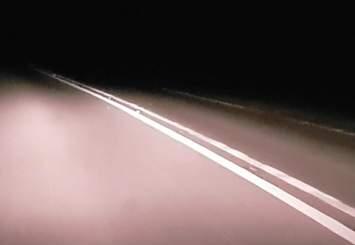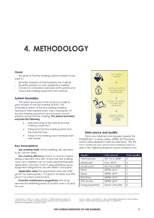










Project Highways Zero started in 2020 to highlight how carbon savings can be made across our highway and transportation infrastructure with respect to line marking and surface repairs. The campaign is backed by industry experts Meon Ltd, who are passionate on delivering environmentally great surfaces.
A key milestone in the project was the completion of the first independently verified white paper looking into line marking.
This study it showed that it's possible to reduce net carbon consumption by up to 10 times (by over 1500 kilos of carbon per km) through the use of cold line marking materials and electric application equipment.
Added benefits include improved durability for cost savings and higher retained reflectivity for better safety for road users.
If you are interested in finding out more, please join us by following our campaign! We will be running a series of short online presentations, discussion forums and events to highlight how carbon savings can be made with line marking and surface repairs.


1918 White lines introduced
1918 The first ever road markings that were seen in the UK were in 1918 and the first ever was the famous white line.


1939 TRM’s Developed
1939 TRMs are used on more than 95% of public roads in the UK since the 1950’s. It was originally developed in United Kingdom (UK) between 1939 and 1944 primarily to aid motorists during “blackout” periods.


1972 1000m's Motorway Built
1972 - The first 1,000 miles (1,600 km) of motorway had been built by 1972 and more motorways opened into the 1980s.


1984 Road Traffic Act
The Road Traffic Regulation Act 1984 is an Act of Parliament in the United Kingdom, which provided powers to regulate or restrict traffic on UK roads, in the interest of safety. It superseded some earlier legislation, including the majority of the Road Traffic Regulation Act 1967.


2007 Financial Crisis
Following periods of excessive risk-taking in a favourable macroeconomic environment.
June 2007 saw the falling house prices in USA cause economic ripples throughout the world.
Pressures on the UK government


2008 Climate Change Act
The Climate Change Act 2008 sets a legal framework for the UK to cut greenhouse gas emissions to 80% below 1990 levels by 2050. It requires the government to set binding, five-yearly carbon budgets based on the latest science, and in light of economic circumstances..


2010 Spending Review
"The age of irresponsibility is giving way to the age of austerity" and the government committed to end years of what was characterised as excessive government spending.


2016 Paris Agreement
The Paris Agreement sets out a global framework to avoid dangerous climate change by limiting global warming to well below 2°C and pursuing efforts to limit it to 1.5°C. It also aims to strengthen countries’ ability to deal with the impacts of climate change and support them in their efforts.

2019 Nett Zero Target Set
The UK Government have unveiled a new legally binding target to be net-zero carbon by 2050, replacing the old 80% emissions reduction pledge that came from the 2008 Climate Change Act. It is the first country, of those historically responsible for greenhouse gas emissions, to set this kind of zero carbon goal.

KEY MILESTONES...
We want to walk you through a journey about line marking. How it began in 1918, advancements made in WWII, then safety became a focus in 1984, the GFC forced productivity to be assessed and then natural disasters around the world have caused governments to focus on the environment.






Project Highways Zero’s purpose is to highlight how carbon savings can be made with line marking and surface repairs across our highways infrastructure. This is underpinned by the fundamental elements that all line marking and surface repair systems used on the UK should have a focus around: SAFETY | DURABILITY | ENVIRONMENTAL




MAKING THE TRANSFER

The industry can only go one way… By reviewing every system and product used, where can carbon reductions be made without compromising performance.


MMA COLD PLASTIC: DEVELOPMENTS

PMMA (Poly Methyl methacrylate) technology was originally developed by Germans early 1900’s. During the 1950’s it became a ‘go-to’ substrate for making acrylics etc due to high stress properties. Exceptional adhesive properties offered opportunities to be utilised within the automotive industry. The ability to adjust the rigid properties of the formulation enabled the technology to be used in manufacturing of robust education equipment. Medical industry identified the potential to utilise the technology for dental fillings and bone repairs. The low water absorption properties meant the technology could be used in cosmetic applications. All these properties can be adjusted and the combination developed to formulate high durability line marking systems. First used in the UK in early 2000.










Independently verified studies, carried out by the university of Alberta (Canada), have shown that there is a 60% reduction in carbon emissions when working with cold applied MMA compared to hot applied systems.
Additionally, there is the potential to increase this to over 90% if used in combination with electric application equipment and vehicles.







METHODOLOGY
















UNDER-LINING EMISSIONS WHITE PAPER














Working with certification parties, Aetec.
Trials with Highways England and on-site testing by PTS.
Environmental study completed by Energy Experts – University of Alberta.
Study verified by Avieco in accordance with ISO 14064:1 & 14064:3
Industry 1st white paper to demonstrate the opportunities to reduce emissions.




Improved safety by increased retained retro-reflectivity



Together we can help drive net carbon consumption down across our highways infrastructure, through the use of innovative line marking and surface repair systems.
Project Highways Zero is committed to help this change and are working with various partners across the UK to achieve this goal. Projects include; trials, training, development of new technologies, and innovative products.
To find out more about these projects, or speak to someone about a specific requirement you may have; visit www.netzerocarbonhighways.com or email us on succeedtogether@netzerocarbonhighways.com








A CAMPAIGN FOR DELIVERING ENVIRONMENTALLY GREAT SURFACES
SUPPORTED BY:

